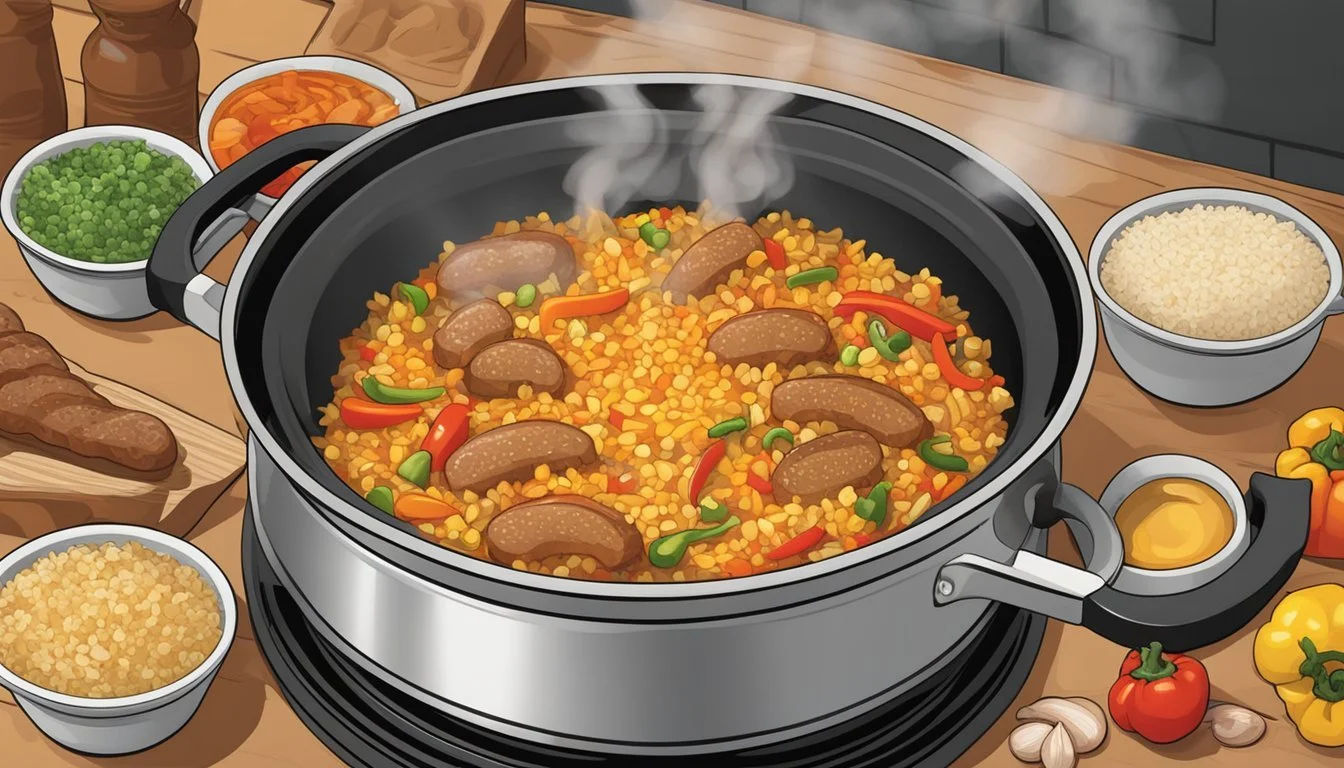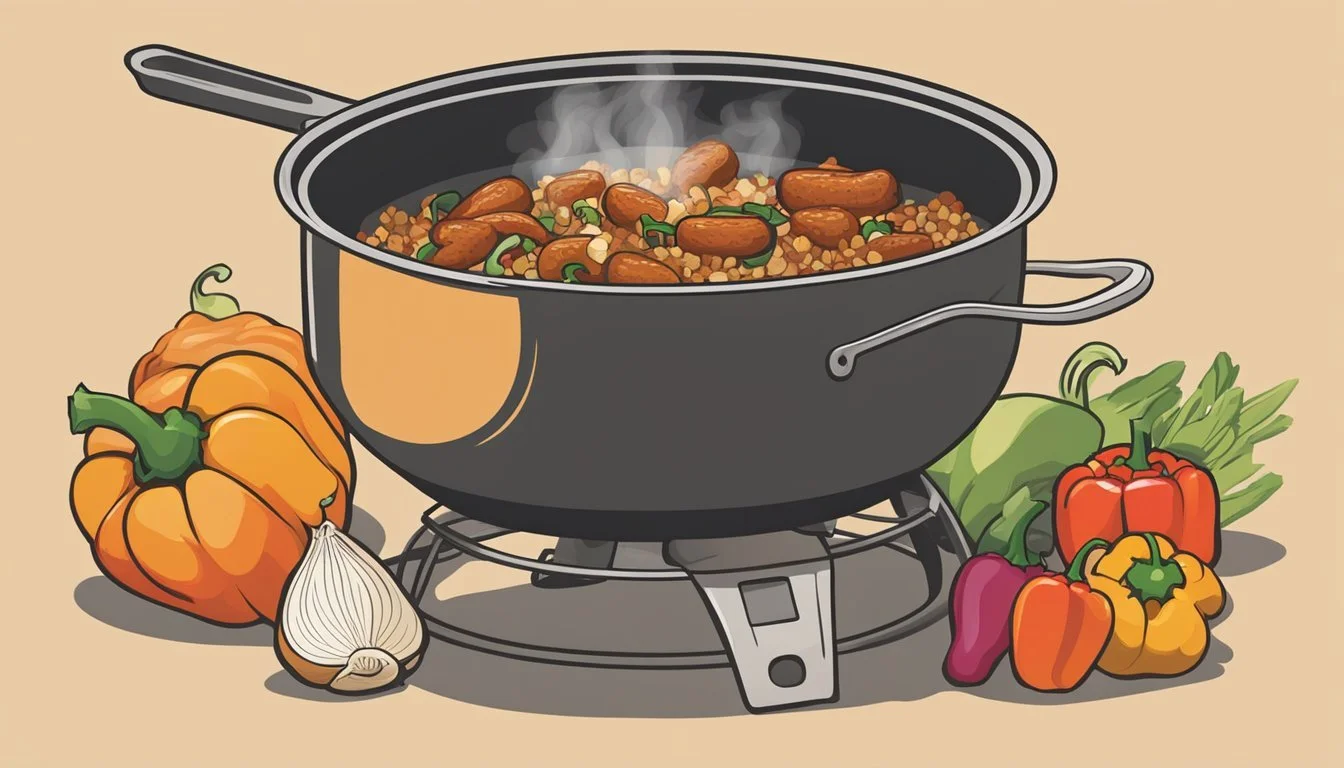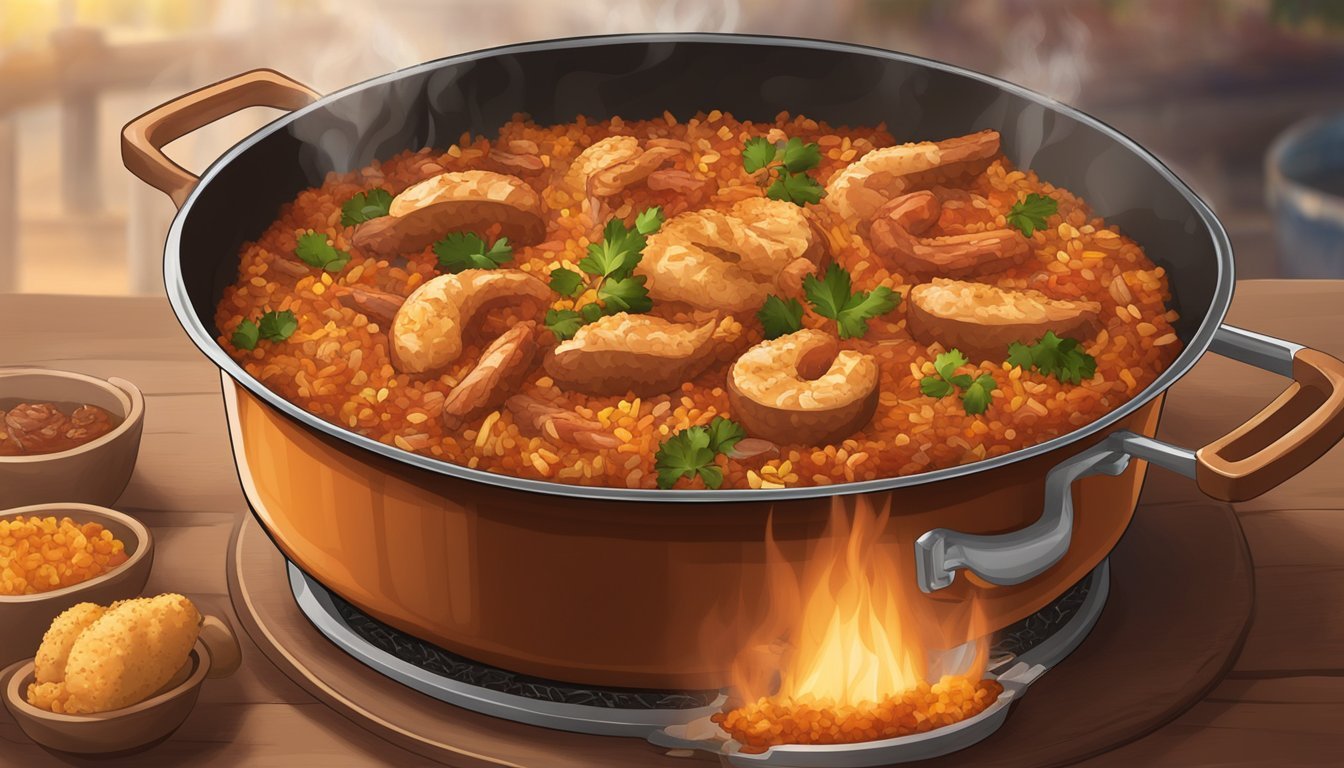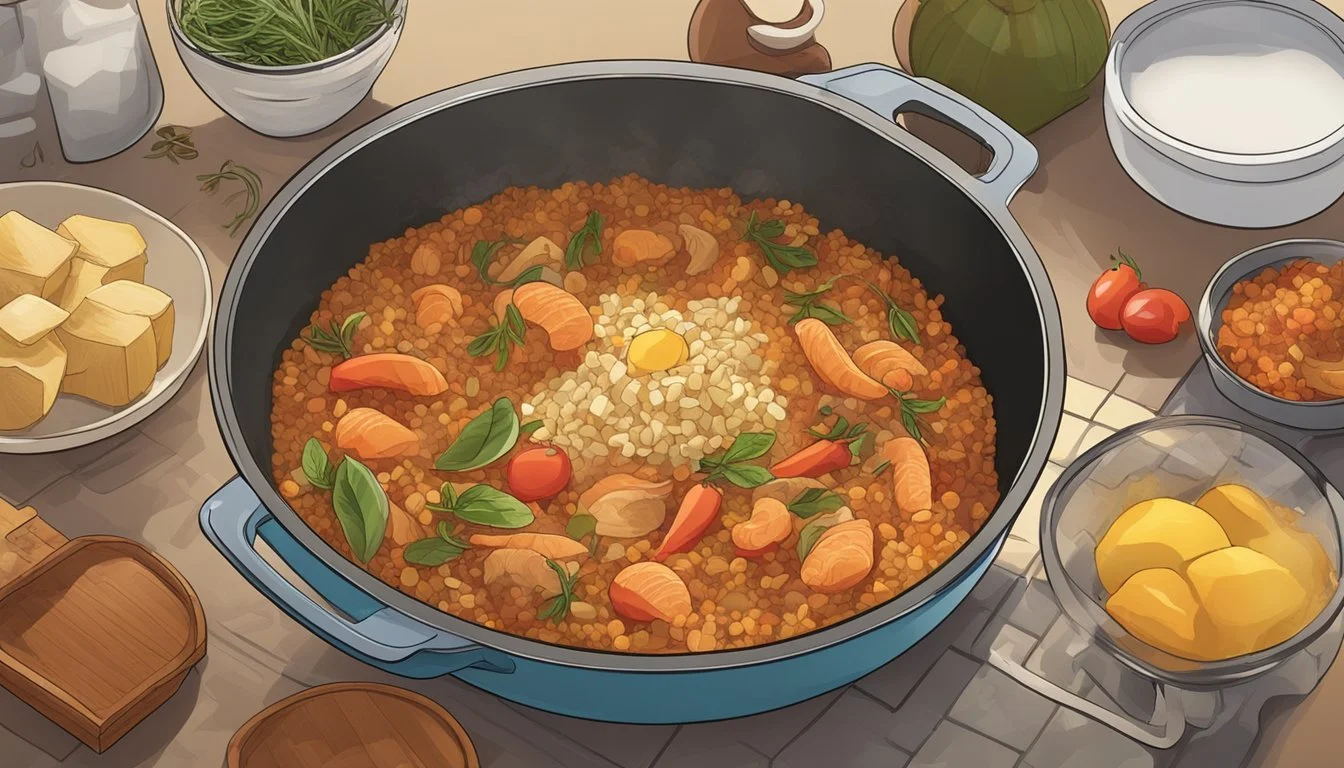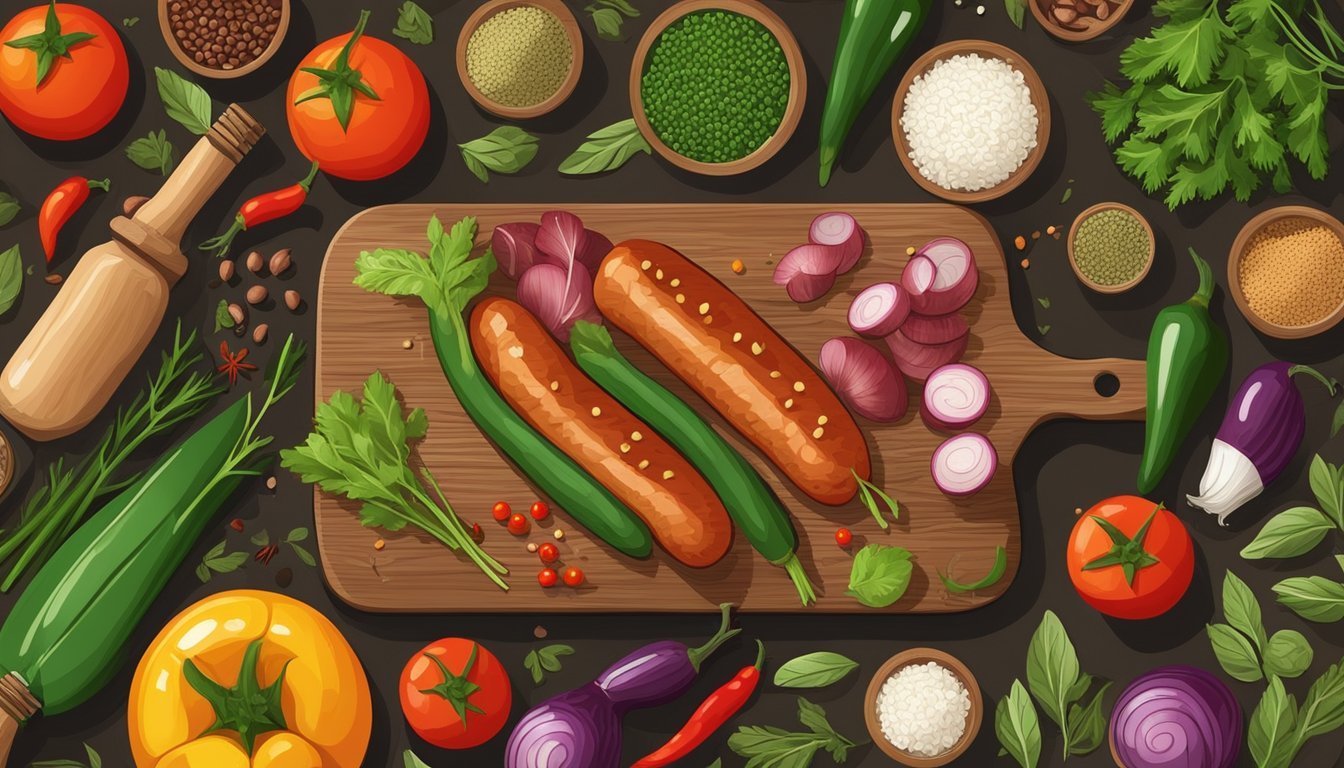How to Make a Texas-Style Jambalaya
A Step-by-Step Guide
Jambalaya, the quintessential one-pot dish from Louisiana, embodies the rich cultural tapestry of the region with its blend of Cajun and Creole traditions. Its heartiness and versatility have made it a beloved staple beyond the borders of its origin, with the Texas-style jambalaya offering a unique twist on the classic. This version pays homage to the Lone Star State's fondness for bold flavors and substantial fare, incorporating local ingredients and preferences into the time-honored recipe.
The process of creating a Texas-style jambalaya begins with selecting the right proteins—a combination of chicken, sausage, and sometimes shrimp—each ingredient bringing its own depth to the flavor profile. The method of preparation involves cooking the proteins with a blend of vegetables and spices, allowing the flavors to meld together. Rice, the absorbing agent of all the savory juices, forms the base of the dish, ensuring that each spoonful is infused with the rich, spiced broth that makes jambalaya a soul-satisfying meal.
Distinct from its Louisiana counterpart, which often features seafood, the Texas rendition is likely to include local meats like smoked sausage or ham, adding a hearty smokiness that complements the traditional mélange of seasonings such as thyme, paprika, and a bay leaf. While staying true to its roots, the Texas-style jambalaya showcases the state’s inclination towards meat-heavy dishes and its skilled integration of regional tastes into well-known classics.
Essential Ingredients
The foundation of an authentic Texas-style jambalaya lies in its combination of proteins, vegetables, and a rich array of herbs and spices. Each component brings its own distinct flavor, creating the signature taste of this Southern classic.
Proteins
Sausage: Andouille sausage or kielbasa for a traditional smoky taste.
Chicken: Boneless chicken breast (What wine goes well with chicken breast?) or thigh pieces provide a hearty texture.
Seafood: Shrimp adds a delicate seafood flavor, complementing the other proteins.
Vegetables
Onions and Green Onions: Onions form the base of the flavor, while green onions are used for garnish.
Celery: (how long does celery last?) A key part of the "holy trinity" of vegetables in Southern cooking.
Bell Peppers (What wine goes well with bell peppers?): Green bell pepper is traditional and provides sweetness and color.
Tomatoes: Diced tomatoes or crushed tomatoes contribute to the jambalaya’s signature sauce.
Garlic: Minced garlic or garlic cloves for a pungent kick.
Herbs and Spices
Salt and Cayenne Pepper: For seasoning, adjust according to taste.
Thyme, Oregano, and Basil: These dried herbs enhance the overall flavor.
Bay Leaf: One or two leaves add depth to the dish.
Paprika and Smoked Paprika: Use for warmth and smokiness.
Parsley: Often used as garnish for a fresh, herbaceous note.
Cooking Equipment
For an authentic Texas-style Jambalaya, chefs will require sturdy and efficient cooking equipment to handle the array of ingredients and the extended cooking time. The cornerstone of this culinary venture is a cast iron Dutch oven, which offers excellent heat retention and distribution—ideal for the slow simmering that Jambalaya demands.
Required Cooking Equipment:
Cast Iron Dutch Oven: A heavy-duty pot that can go from stovetop to oven if necessary.
Wooden Spoon or Spatula: To stir the ingredients without scratching the pot.
Recommended Size for the Dutch Oven:
6-Quart Capacity: Suitable for feeding a family or a small gathering.
The use of a Dutch oven is not just tradition; its deep sides and thick walls make for an even cooking environment. Additionally, the tight-fitting lid seals in moisture, ensuring that rice and proteins cook thoroughly without drying out.
Chefs should ensure the Dutch oven is well-seasoned to prevent sticking and enhance flavor. Prior to cooking, a coat of vegetable oil is often used to lightly grease the pot, which further prevents sticking and contributes to a smooth cooking process.
When using cast iron, it's essential to preheat the pot before adding ingredients. This step ensures a good sear on the meats and a fond that will add depth of flavor to the Jambalaya.
In summary, selecting the right equipment will significantly affect the outcome of the dish. A well-chosen cast iron Dutch oven becomes an invaluable tool for any chef aiming to deliver an authentic and flavorful Texas-style Jambalaya.
Preparing the Jambalaya
The preparation of Texas-style Jambalaya involves three key steps: cooking the proteins, sautéing the vegetables, and assembling the dish to create a rich, flavorful one-pot meal.
Cooking the Proteins
In a Dutch oven, heat olive oil over a medium-high flame. Begin by browning the andouille sausage, which adds a smoky depth, and set it aside. In the same pot, cook the chicken until it's lightly browned on all sides, ensuring that each piece is seasoned well. Using a slotted spoon, remove the chicken and set it aside with the sausage.
Sautéing the Vegetables
In the remaining oil, sauté the trinity of vegetables: finely chopped onion, bell pepper, and celery. Cook them until they are tender, but not browned, which should take around five to seven minutes. The vegetables should absorb the flavors from the bottom of the pot, which adds to the complexity of the dish.
Assembling the Dish
Pour the chicken broth into the pot with the sautéed vegetables. Add the cooked proteins back in, along with rice, a staple ingredient that will absorb the flavors and broth. Pour in tomatoes—with their juice—to bring tartness and body to the jambalaya. Stir everything together, ensuring that the rice is evenly distributed. Bring the mixture to a boil, reduce the heat, cover the Dutch oven, and let it simmer. Cook until the rice is tender and most of the liquid has been absorbed. Toward the end of cooking, stir in chopped green onions for a fresh layer of flavor.
Seasoning and Flavoring
The proper blend of herbs and spices is essential to achieve the authentic taste of Texas-style jambalaya. This dish marries the heat of peppers with the complexity of various seasonings to create a rich, bold flavor profile.
Herbs and Spices to Use
When crafting Texas-style jambalaya, one must consider a carefully selected array of herbs and spices. The basics include:
Oregano: This herb adds an earthy, slightly bitter note.
Thyme: It imparts a subtle, savory layer.
Bay leaf: Used to infuse a hint of floral and herbal essence.
Parsley: For a fresh, slightly peppery finish.
For the essential heat and smokiness:
Paprika: Both regular and smoked paprika work to provide warmth and depth.
Black pepper: It contributes a sharp, pungent kick.
Cayenne pepper: A staple in Cajun cooking, it provides intense heat.
To round out the jambalaya's flavor profile:
Garlic: Either powdered or freshly minced garlic offers a potent, aromatic base.
Worcestershire sauce: This adds a tangy, umami dimension.
Hot pepper sauce: To enhance the spiciness at your discretion.
Additional spices such as smoked paprika can be included for an extra layer of complexity.
Adjusting Spiciness
One of the hallmarks of Texas-style jambalaya is its bold spiciness. To tailor the heat level:
Cayenne: Start with a small amount and gradually increase to taste for a controlled burn.
Hot sauce and Jalapeños: For those who prefer a spicy jambalaya, adding hot sauce or diced jalapeños can significantly ramp up the heat.
Black pepper: While it adds sharpness, adjusting the quantity of black pepper can subtly affect the overall spice level without overpowering the dish with heat.
Serving Suggestions
When serving Texas-Style Jambalaya, the accompaniments and presentation are as important as the dish itself to create an authentic dining experience.
Accompaniments
Green Onions: Chopped green onions offer a pop of color and a fresh, sharp taste to complement the rich flavors of the jambalaya.
Parsley: A sprinkle of fresh parsley not only adds visual appeal but also introduces a subtle herbaceous touch.
Rice: Since rice is a central ingredient, ensuring it is perfectly cooked—fluffy and distinct—elevates the overall texture of the dish.
Cold Beer: A glass of cold beer serves as the perfect beverage to accompany the spicy and hearty flavors of jambalaya.
Presentation Tips
Layering: Present the jambalaya in a large dish, layering the ingredients to showcase the variety included in the recipe.
Garnishes: Place the chopped green onions and parsley on top of the jambalaya before serving to maintain their crispness.
Portion Control: Serve jambalaya in moderate portions with room on the plate for side dishes and garnishes, which aids in highlighting all elements of the meal.
Temperature: Ensure that the dish is served hot, which is crucial for both flavor and texture.
Traditions and Variations
Jambalaya, a celebrated dish in Louisiana cuisine, is deeply rooted in French, Cajun, and Creole traditions. The foundational recipe involves a symphony of meat, vegetables, and rice. Texas-style jambalaya introduces a spin on this beloved classic, infusing Southwestern and Mexican flavors that highlight the Lone Star State's rich culinary tapestry.
French influence is evident in the use of aromatic vegetables – or the "holy trinity" – of onions, bell peppers, and celery. This mirrors the French "mirepoix," except that in Cajun cooking, bell peppers replace carrots.
Cajun jambalaya, which is more rustic and typically spicier, often includes Andouille sausage and chicken. Creole, or "red" jambalaya, incorporates tomatoes, which were introduced by Italian immigrants in New Orleans, adding a different layer of flavor and color.
In Texas, these traditions are modified. For example, Texas-style jambalaya might add local ingredients such as Texas beef, or include spicy Mexican chorizo to complement traditional meats.
Distinct from Louisiana jambalaya, Texas versions may also incorporate black beans or corn, echoing Southwestern influences.
Here's an outline of the key elements in both Louisiana and Texas-style jambalaya:
Base: Rice is non-negotiable, soaking up the rich flavors from the combination of meats and vegetables.
Proteins:
Louisiana: Andouille sausage, chicken, or seafood
Texas: Includes or substitutes with beef, chorizo
Vegetables: Holy trinity (onions, bell peppers, celery) remains consistent, with variations in additional vegetables like corn.
Seasonings:
Louisiana: Thyme, bay leaf, Cajun spices
Texas: May feature bold spices like ancho chili powder or Mexican-inspired seasonings.
While gumbo and etouffee are cousins to jambalaya, they differ in consistency and preparation; gumbo is more soup-like, while etouffee is thicker and served over rice rather than mixed in. Texas-style jambalaya, with its variations, continues to respect the dish's roots while adding its unique touch, reflecting the state's diverse gastronomic heritage.
Storing and Reheating
Storing Texas-style jambalaya properly is key for preserving its flavors and ensuring it is safe to eat when reheated. It should be cooled down to room temperature before placing it in the refrigerator or freezer. For refrigeration, one should use an airtight container and consume the jambalaya within three to four days. For freezing, it is advisable to use freezer-safe bags or containers, and the jambalaya can be stored for up to about three months.
When reheating, there are a couple of methods one can employ to keep the jambalaya moist and delicious:
Oven Reheating
Preheat the oven to 350°F (180°C).
Transfer the jambalaya into an oven-safe dish, such as a Dutch oven, which is excellent for even heating.
Add a small amount of broth or water to keep it moist.
Cover the dish with aluminum foil to seal in moisture.
Reheat for 20-30 minutes, checking occasionally.
Stovetop Reheating
Place the jambalaya in a skillet or frying pan.
Set the stove to medium heat.
Add a tablespoon of broth or water to prevent drying out.
Stir occasionally, allowing it to reheat for about 5-10 minutes, until thoroughly warmed.
Table for Reheating Times and Temperatures:
Method Temperature Time Additional Tips Oven 350°F 20-30 minutes Cover with foil; add liquid Stovetop Medium Heat 5-10 minutes Stir; add a bit of broth or water
When reheating, ensure that the jambalaya reaches an internal temperature of 165°F to ensure it is safe to eat. Regardless of the method chosen, one must be gentle with the heat to prevent the ingredients, especially rice, from becoming too dry or mushy. After reheating, any leftovers should not be reheated again and instead discarded for safety reasons.
Nutritional Information
When preparing a Texas-Style Jambalaya, the nutritional content can vary based on the specific ingredients used and their quantities. A typical serving of Jambalaya can range between 400-500 calories. The dish often contains a high-calorie count due to its rice and meat components.
Rice, as the base ingredient, contributes a significant amount of carbohydrates. White rice is commonly used, although substituting it with brown rice can increase the dish's fiber and nutrients.
Chicken breast is a lean protein source, and when included in the recipe, it can elevate the protein content while keeping the fat levels relatively low.
Sausage, another common ingredient, increases the total fat, especially if it's a variety high in saturated fat. The choice of sausage can impact the calorie and fat content of the jambalaya significantly.
Shrimp is a low-fat protein that also supplies a touch of seafood flavor, and it is rich in essential nutrients like iodine.
Here's a sample breakdown of the nutritional content one might expect from a serving of Texas-Style Jambalaya:
Ingredient Calories Fat (g) Carbohydrates (g) Protein (g) Rice - - 45 4 Chicken - 3 0 26 Sausage - 13 1 5 Shrimp - 0.5 0 20
The nutritional information per serving may also include sodium and cholesterol, with values depending on the use of seasonings and type of sausage. One should consider these macronutrients when preparing the dish to cater to specific dietary needs or preferences. Nutritional needs may vary, so it's always best to adjust the recipe accordingly and consult with a nutritionist for personalized dietary advice.

